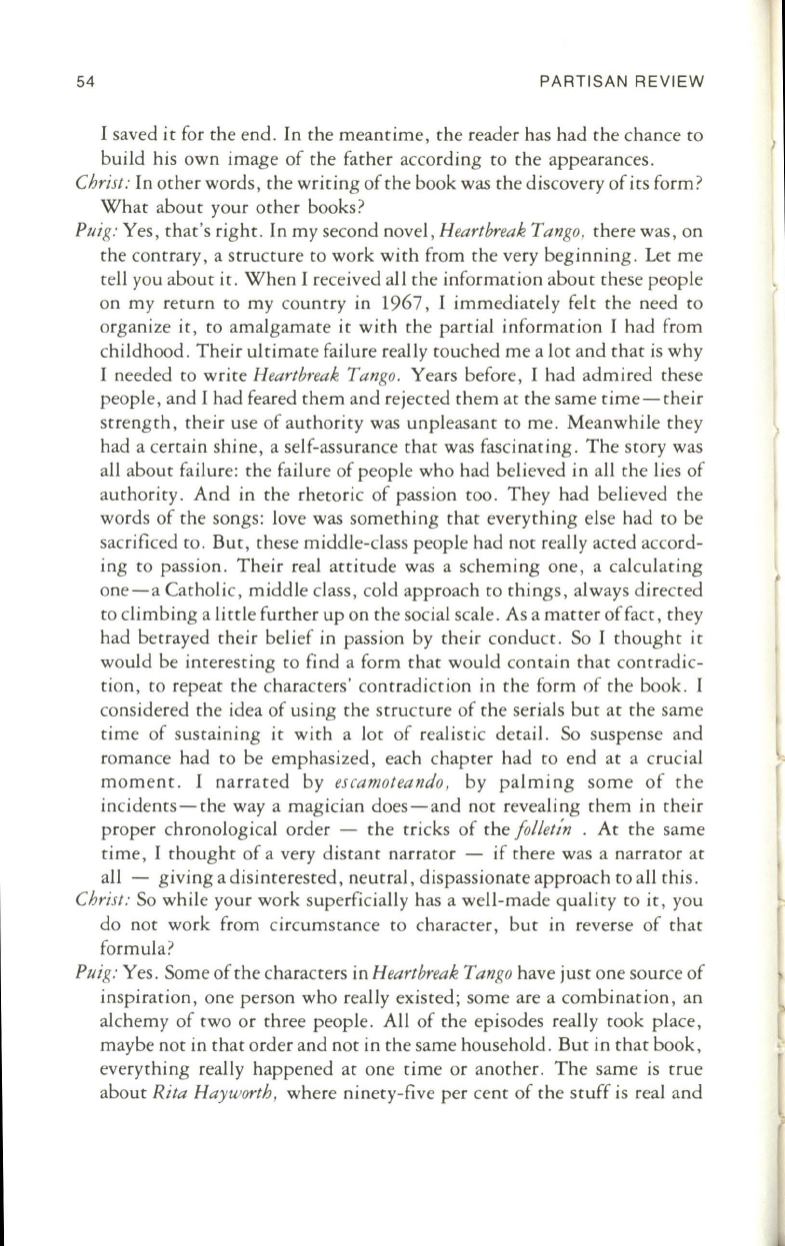
54
PARTISAN REVIEW
I saved it for the end. In the meantime, the reader has had the chance to
build his own image of the father according to the appearances.
Christ:
In other words, the writing of the book was the discovery of its form?
What about your other books?
Puig:
Yes, that's right. In my second novel,
Heartbreak Tango ,
there was, on
the contrary, a structure to work with from the very beginning. Let me
tell you about it. When I received all the information about these people
on my return to my country in 1967, I immediately felt the need to
organize it, to amalgamate it with the partial information I had from
childhood. Their ultimate failure really touched me a lot and that is why
I needed to write
Heartbreak Tango.
Years before, I had admired these
people, and I had feared them and rejected them at the same time-their
strength, their use of authority was unpleasant to me. Meanwhile they
had a certain shine, a self-assurance that was fascinating. The story was
all about failure: the failure of people who had believed in all the lies of
authority . And in the rhetoric of passion too . They had believed the
words of the songs: love was something that everything else had to be
sacrificed to . But, these middle-class people had not really acted accord–
ing to passion . Their real attitude was a scheming one, a calculating
one-a Catholic, middle class, cold approach to things, always directed
to climbing a little further up on the social scale. As a matter offact, they
had betrayed their belief in passion by their conduct. So I thought it
would be interesting to find a form that would contain that contradic–
tion, to repeat the characters' contradiction in the form of the book. I
considered the idea of using the structure of the serials but at the same
time of sustaining it with a lot of realistic detail. So suspense and
romance had to be emphasized, each chapter had to end at a crucial
moment. I narrated by
escamoteando,
by palming some of the
incidents-the way a magician does-and not revealing them in their
proper chronological order - the tricks of the
Jolletin
.
At the same
time, I thought of a very distant narrator - if there was a narrator at
all - giving a disinterested, neutral, dispassionate approach to all this.
Christ:
So while your work superficially has a well-made quality to it, you
do not work from circumstance to character, but in reverse of that
formula?
Puig:
Yes. Some of the characters in
Heartbreak Tango
have just one source of
inspiration, one person who really existed; some are a combination, an
alchemy of two or three people. All of the episodes really took place,
maybe not in that order and not in the same household . But in that book,
everything really happened at one time or another. The same is true
about
Rita Hayworth ,
where ninety-five per cent of the stuff is real and


